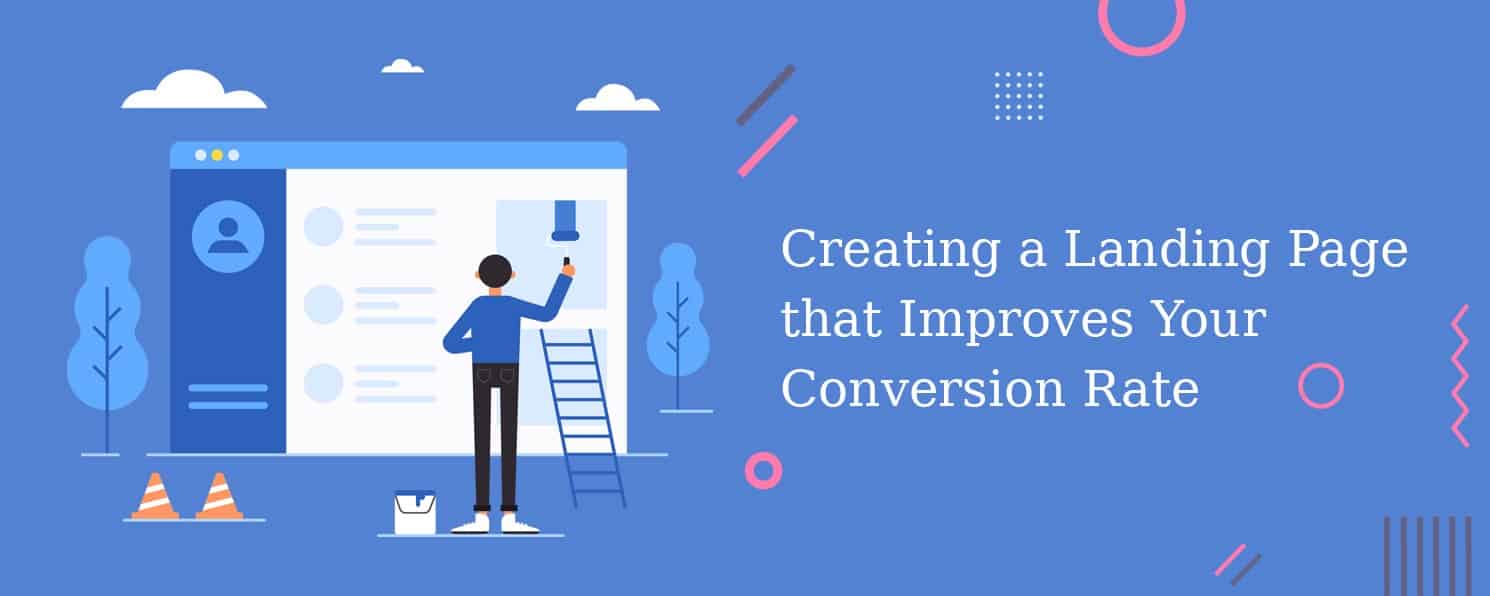
Landing pages are used by digital marketers all over the world for their various campaigns. Many marketers like to take their traffic generated from paid marketing to specialized landing pages instead of their website pages. The purpose behind this is to capture a lead or to get the visitor to perform a specific function like signing up for a webinar. So, in many ways, the success of your online marketing activities depends upon how well optimized your landing page is which is why some companies specialize in the landing page design such Linear who can be found here https://lineardesign.com/services/landing-page-design/. In this post, we will do a deep dive into what landing pages are, the types of landing pages, and how to create a landing page that improves your conversion rates.
Landing pages are usually not part of your website’s menu or architecture. They are standalone pages that are created on sub-domains to target a particular set of audience members. They can be pages regarding certain products or services, they can be targeting specific sectors in case of B2B marketing, they can even be different variations of the same page for the purpose of A/B testing.
These pages are used with various marketing campaigns like email marketing, social media marketing, and search engine marketing like Google and Bing ads. Under common circumstances, the purpose of these pages is to capture leads through the contact us form. That is why most landing pages have a contact form right at the top banner under the header. These pages do not have any internal linking with any pages of your website. They are designed to keep the customer in the ecosystem of that page and leave them with only one way of getting in touch. Through the form.
Some landing pages can be created for the purpose of getting visitors to sign up for webinars, online classes, download software or mobile applications, etc.
There are different types of landing pages that serve their own unique purpose for your campaigns. Below are some of the most common types of landing pages.
This is the most common landing page type there is. We have already discussed this sort of page in the earlier section of this post. This is a basic page that drives visitors to take the action of filling the contact form. The page contains information about your product that you deem to be its USP. This USP, it impresses the visitors and will make them want to get in touch with you through the form.
Earlier I had mentioned that landing pages do not have internal linking and are designed to keep the visitor on that page only. Well, the click-through landing page is an exception. It acts like a gateway that lets customers go through to the final page, which in most terms is the payment page or the download page. This page provides visitors with the required information and the sales pitch. The customers that are convinced by the content of the page, click through to the next phase of conversion.
When a company is about to launch a new product but want to start creating a buzz about it early on in the market, they use the coming soon landing page. This page is usually linked to a social media ad and it takes customers to a page where they can pre-book the product or sign up for an email about the launch date of the product. This works great for the B2C product segment like launching new smartphones or laptops.
This landing page has two purposes. One is to capture the lead through the contact form and the other is to get the visitors to spread the message about their page through social media. These pages are generally used with social media ads. They have social media share buttons embedded in the page to make sharing them easy for the visitors. We live in the age of viral marketing and these sort of landing pages play a crucial role in that.
There are several other types of landing pages but these are the most common types for your knowledge.
Every landing page has certain basic elements that form its structure. It is important that every landing page has at least these elements for a good start.
a)Relevant and Keyword Rich Headlines
Whether you are using the page for social media marketing or for Google ads, the headline of the page has to be the most important content. You have to be able to capture your visitor’s attention in the first ten seconds of landing on the page. If your headline is not compelling and is not relevant to your target audience, it will lead to a high bounce rate. Having keywords in the headline also improves your landing page experience and quality score in Google ads.
b)Contact Form
Of course, the contact form is an essential element of the landing page. You need to make sure that the form is available at the top of the page right near your headline. Another thing to consider is the fields of that form. You need to decide which information is necessary for you and make sure those fields are added and made compulsory.
c)USP
How do you get visitors to fill your contact form? You utilize the USP of your product or service to show them a unique value proposition. This will be enough to lure your prospects to the contact form.
d)Call To Action
A strong call to action is a must for the conversion rate of your page to be good. It should be clear to the visitors what you want them to do. Whether its to contact you through the form or sign up for a class or call you for a special discount, it should be used keeping in mind the relevance of your page.
Creating landing pages is not a challenge. Even adding the basic elements given above is not challenging. The challenge is to get a majority of your landing page visitors to convert into leads or customers. For this, you need to use certain analysis of your target audience as well as your own offering. Come up with the right mix of words and images to reach the customers’ hearts. Below are some ways you can do that.
If you are in digital marketing, you know what buyer personas are. They are artificial customers we create that have a certain amount of knowledge about their own needs as well as the options out there in the market. You need to understand what your customer’s persona is and create the landing page content accordingly so that it is the most relevant to the right people.
Keep your landing page decluttered. Do not add multiple CTA that would confuse your visitors and make them avoid taking any action altogether. Remember, decision paralysis is a real thing. Your message should be clear to your audience from the getgo and they should be able to tell what you want them to do.
We operate in a mobile-first world. Customers are on their mobile phones more than they are on their computers. So, for any B2C marketer, in particular, it is important to make the landing page mobile-friendly so that the user experience is a good one. Not just for B2C, these days many professionals who are on the go prefer to browse the web on their mobile devices so a mobile-friendly landing page works for B2B as well.
Just like your marketing campaigns, make your landing pages target specific. For example, if you are running ads targeting different sectors, then it is better to create a specific landing page for each target sector instead of a generic landing page for all of them. Targeted landing pages have a better chance of converting as they speak to the target audience’s industry concerns. The same strategy can be applied to direct consumers as well because different consumers may have different needs so targeted pages work best with them as well.
For a better conversion rate, its always advisable to create multiple versions of your pages with minor differences. These differences can be in the headline, call to action, banner image, etc. Then use both versions in your campaigns to see which page your audience responds to the most. If one page is clearly outperforming the other, you can solely start using that page in all your campaigns.
In the end, I hope that the information shared above will be useful to you in your online marketing campaigns. Better converting landing pages ensure that your advertising dollars are being put to good use and lets you make the most of your budget. If you have any questions or want assistance with your digital marketing, you can contact Clap Creative at any time for a consultation.

A seasoned technology writer and marketing consultant with over a decade of experience helping businesses grow online. I specialize in content marketing, SEO, web design, and e-commerce development. I am enthusiastic about using cutting-edge technology to acquire high-quality traffic, generate leads, and increase sales for my clients.